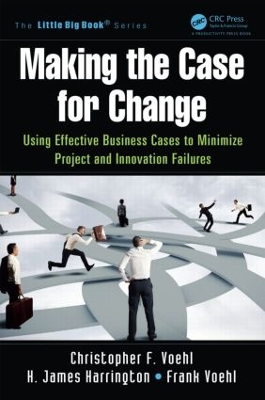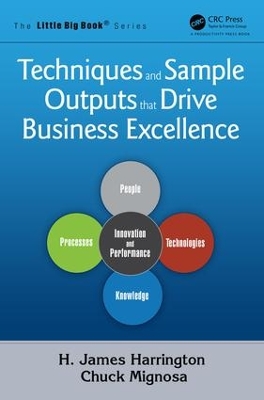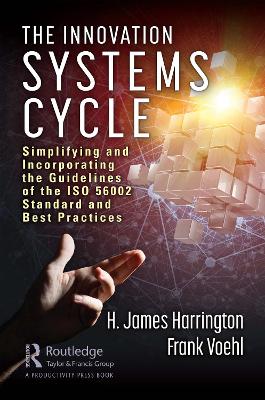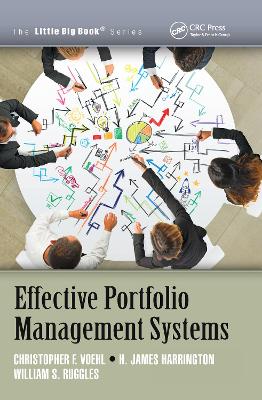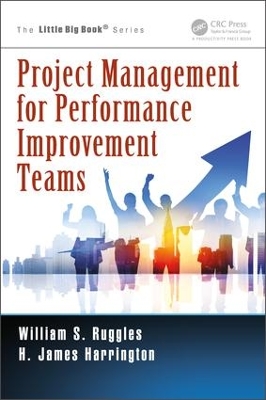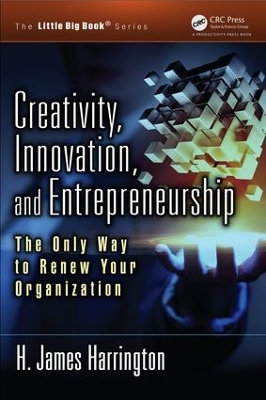Little Big Book
12 total works
Making the Case for Change
by Christopher F. Voehl, H James Harrington, and Frank Voehl
The best time to stop projects or programs that will not be successful is before they are ever started. Research has shown that the focused use of realistic business case analysis on proposed initiatives could enable your organization to reduce the amount of project waste and churn (rework) by up to 40 percent, potentially avoiding millions of dollars lost on projects, programs, and initiatives that would fail to produce the desired results. This book illustrates how to develop a strong business case which links investments to program results and, ultimately, with the strategic outcomes of the organization. In addition, the book provides a template and example case studies for those seeking to fast-track the development of a business case within their organization.
Making the Case for Change: Using Effective Business Cases to Minimize Project and Innovation Failures provides executive teams and change agents with the information required to make better business case decisions. This book can be used throughout the life cycle of the project to assist with gaining a better understanding of the following key knowledge areas for developing a business case:
- Understanding the present problem/improvement opportunity
- Documenting how the project, program, or initiative will add value to the organization
- Validating the data and the assumptions that the projected improvements are based upon
- Calculating the level of confidence that can be placed upon the conclusions that are reached
- Assessing the alternative solutions that were considered
- Weighing the costs vs. the benefits of the proposed initiative
- Analyzing and mitigating the risks to completing 100 percent of the project’s goals
- Eliciting and prioritizing the requirements of key stakeholders and subject matter experts
- Identifying the key people that are involved in the proposed project and the skills needed to implement the proposed change
- Obtaining consensus on the decision to move forward, as well as on the methods used and the conclusions specified in the analysis
Ideal for executives and project/initiative managers seeking approval of an activity, initiative, program, or project, the book presents proven tips, advice, suggestions, and recommended courses of action for developing effective business cases. In addition, suggestions for recruiting a responsible senior officer or sponsor for the project and for engaging an audience are provided.
The authors combine their own experience in business case development with approaches used by world-class organizations. They provide a general range of assessment criteria that can be applied to almost any type of project business cases.
The text discusses each of the 8 activities and the 35 tasks that make up the business case development process. This process supplies you with a proven approach for creating comprehensive and well-constructed business case evaluations that will either ensure the success of your project, or eliminate unsuccessful projects, programs, and initiatives before they start.
Techniques and Sample Outputs that Drive Business Excellence
by H James Harrington and Chuck Mignosa
Maximizing Value Propositions to Increase Project Success Rates
by H James Harrington and Brett Trusko
Value proposition, an old concept, is taking on new significance in today's innovation-driven environment. Business focus has shifted from developing many creative ideas to developing only those that will successfully flow through the product cycle and fulfill a customer need.
The old approach resulted in less than a 10 percent success rate for concepts that started through the product cycle; this can no longer be tolerated. This new book on value propositions outlines a systematic approach to making an early evaluation of potential projects and programs so you can determine if they can add real value to your organization or its customers-potentially saving you millions of dollars and months of valuable time.
Focusing on the necessary data collection efforts, Maximizing Value Propositions to Increase Project Success Rates will help you identify easy opportunities for improvement and will guide you through the process of creating value propositions for the ideas that will drive the organization's future profits. It outlines a four-stage approach to creating value propositions and explains how to create effective value proposition documents.
The book illustrates the role of the opportunity center in capturing new ideas, describes how to present value propositions to management, and includes an example of a new product value proposition. Detailing a method for continuous review of the improvement process, it will help you foster an entrepreneurial mind-set within your employees and encourage them to actively search and document value-adding ideas.
Through the effective use of value propositions it is completely possible for your organization to increase the number of new products/services it offers to your customers by over 100 percent. It is not unusual for this to result in more than a 40 percent increase in profits per year. Adopting the approach outlined in the text for using value propositions can save your organizations millions of dollars and much time. What could be better than reducing costs while increasing sales?
Currently, the prime focus for US business plans should not be on the manufacturing process design and delivery processes, but on greatly improving innovation leadership, design engineering capability, and sales and marketing innovation. These three areas have been sadly lacking significant performance improvement during the past 20 years.
The magic word for US business is "simplification." Most of the books written to date focus on the solution development aspect of the Innovation System Cycle, which is less than 15% of the total innovative system. Focusing on solution development is only the start -- the rest of the innovation system cycle is what turns an idea into a profitable business. The techniques in this book are directed at key tasks across the innovative process, such as maximizing quality, productivity, maintainability, usability, and reliability, while focusing on reducing the product cycle time and costs within the innovative process. This book uses more than 50 different approaches/concepts, which leads the reader in a very simple method for understanding, establishing, and effectively using an innovative system to provide a significant marketing advantage. Previous books have focused on what to do; however, this book focuses on how to do it. It transforms a complicated complex system into easy-to-use and understand methodology.
Effective Portfolio Management Systems
by Christopher F. Voehl, H James Harrington, and William S. Ruggles
Project Management for Performance Improvement Teams
by William S. Ruggles and H James Harrington
Project Management for Performance Improvement Teams (or, PM4PITs, for short) provides practical guidance based on innovative concepts for project teams -- especially Performance Improvement Teams (PITs)—and their Project Managers on how to successfully complete individual projects and programs using an ingenious and scalable framework based on an innovative foundation fusing together elements of Project Management, Innovation Management, and Continual Improvement. This book lays out how Project and Program Managers and their teams can "do those right projects the right way," one project at a time.
It details what continual improvement, change, and innovation are, why they are so important, and how they apply to performance improvement—both incremental and transformative. The authors examine the four types of work and workforce management in organizations, Strategic, Operations, Projects, and Crises, using four common comparative variables: Proactive/Preventive versus Reactive/Corrective, Temporary/Unique versus Ongoing/Repetitive, Innovative versus Maintaining the Status Quo, and Schedule Focus: Fiscal Year versus Short Term versus Long Term. These comparisons set the stage for the uniqueness of the third type: Projects (and Programs) that are fundamentally change-driven.
Organizations around the world are rating their improvement efforts as not producing the desired long-term results. Dr. Harrington’s research indicates that this occurs because organizations are using the latest improvement tools and approaches without first defining how they want to change their organization’s culture, environment, and key performance drivers.
Organizations must first define what controllable factors drive business results. They then must define how they want to change these key performance drivers and behavioral patterns. Only then can they select a customized set of tools and approaches that will bring about the desired transformation.
The first book in the Little Big Book Series, Performance Acceleration Management (PAM): Rapid Improvement to Your Key Performance Drivers, explains how to accelerate the rate of change and improvement in your organization to exceed your customers’ expectations. It introduces the PAM approach to accelerated performance improvement and explains how to use it to bring about significant change to your organization’s long-term performance. Supplying answers to commonly asked questions, the book provides you with the understanding to:
- Conduct an improvement requirements assessment
- Define key drivers and develop vision statements for each
- Define desired behavioral patterns and performance goals
- Develop individual key performance driver (KPD) transformation plans
- Develop and implement a five-year combined PAM plan
- Obtain approval from the executive team
Delving into more than 50 years of experience helping organizations implement improvement approaches, H. James Harrington highlights key opportunities to add value to your organization. With over 1,400 different improvement tools available today, this book provides a set of tools to define how you want to change your organization’s key performance drivers and then develop a customized accelerated approach to achieve the desired transformation.
Rules of the Road for Entrepreneurs
by H James Harrington and Shane P. Rogers
This book combines the knowledge, skills, and risks taken by a young entrepreneur with those acquired by a senior entrepreneur. Dr. Harrington is well-known for his work with many organizations around the world at refining and improving their manufacturing and business processes, organizational structure, and strategic planning. The two authors have combined their experiences to define the process to roadmaps that minimize the risk of failure and cycle time required to go from concept to an established profitable organization. This newly defined entrepreneurial process provides a breakthrough in thinking on activity-by-activity root to entrepreneurial success.
People with ideas are dreamers. People who get things done are doers. One doer is worth eight dreamers. There are three kinds of people who make up an innovator. There are inventors (people who have new and unique ideas), problem solvers (people who have ideas about how to correct a previous error) and entrepreneurs (people who transform ideas into realities). Put them altogether they spell "innovator."
Most innovative books today focus on ways to create new and unique ideas; some of them also address problem-solving, but this is less than 10% of the methodologies that the innovator needs to master. The approaches used in this book transform an idea into reality, or to put it another way, deliver innovative products to make a profit for the organization and instill pride in its employees. This means that every step in the process needs to have innovation applied to it in order to meet the expectations and demands of today's sophisticated customer. This book is designed to help the reader and their organization complete the complex process of bringing a new product to market by presenting what is expected at each step in the cycle and providing step-by-step instructions on what to do at each specific step.
In large to mid-sized organizations this book is designed to help each individual understand how they fit into the innovative cycle and explains why they should be more creative related to the work they do and more conscious of the contributions they can make. It emphasizes the importance of every individual contributing to the organization's innovative process.
The book is designed to help the organization understand its Innovation Systems Cycle. In the early part of the cycle it focuses on weeding out projects that do not have the potential to produce value-added results to the stakeholders. By using the guidelines outlined in this book, an organization can reduce its new project failure rate by as much as 50% which should result in almost doubling the organization’s new product output thereby increasing profits by as much as 15%.
Cementing Customer Relationships
by H James Harrington and Thomas H. Carmody
This book defines how 21st century technologies are changing the way companies interface with customers as well as discuss customer trend tools and the identification of future markets and new demand. It examines customer alignment tools and derivative models, customer engagement tools, and scorecards that create lasting relationships, customer retention, and data mining models.
Recreating Information Technology
by H James Harrington, Richard Harrington, Jr., and Ronald W. Skeddle
This book is needed because tools like Six Sigma, Lean, process reengineering, process redesign, and TQM have completely ignored the impact that IT technology is having upon improving an organization’s performance. This book presents an up-to-date view of performance improvement technologies and explains how readers can use them along with IT technologies to bring about major performance improvement within their organizations. You cannot bring about major process performance improvement within any organization without considering IT's impact upon the processes.
